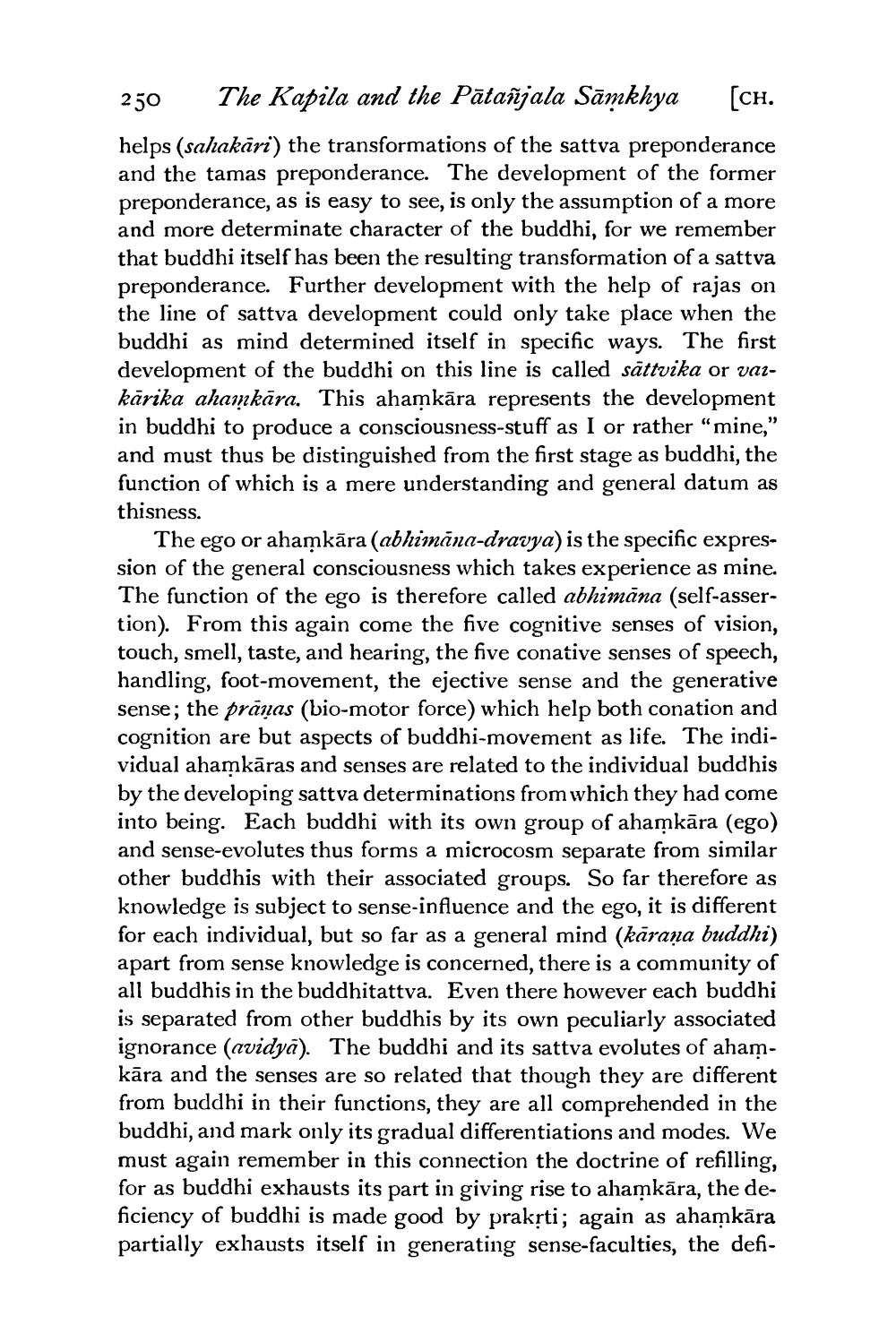________________
250
The Kapila and the Pātañjala Sāmkhya
[CH.
helps (sahakāri) the transformations of the sattva preponderance and the tamas preponderance. The development of the former preponderance, as is easy to see, is only the assumption of a more and more determinate character of the buddhi, for we remember that buddhi itself has been the resulting transformation of a sattva preponderance. Further development with the help of rajas on the line of sattva development could only take place when the buddhi as mind determined itself in specific ways. The first development of the buddhi on this line is called sättvika or vazkārika ahainkāra. This ahamkāra represents the development in buddhi to produce a consciousness-stuff as I or rather “mine," and must thus be distinguished from the first stage as buddhi, the function of which is a mere understanding and general datum as thisness.
The ego or ahamkāra (abhimāna-dravya) is the specific expression of the general consciousness which takes experience as mine. The function of the ego is therefore called abhimāna (self-assertion). From this again come the five cognitive senses of vision, touch, smell, taste, and hearing, the five conative senses of speech, handling, foot-movement, the ejective sense and the generative sense; the prānas (bio-motor force) which help both conation and cognition are but aspects of buddhi-movement as life. The individual ahamkāras and senses are related to the individual buddhis by the developing sattva determinations from which they had come into being. Each buddhi with its own group of ahamkāra (ego) and sense-evolutes thus forms a microcosm separate from similar other buddhis with their associated groups. So far therefore as knowledge is subject to sense-influence and the ego, it is different for each individual, but so far as a general mind (kārana buddhi) apart from sense knowledge is concerned, there is a community of all buddhis in the buddhitattva. Even there however each buddhi is separated from other buddhis by its own peculiarly associated ignorance (avidyā). The buddhi and its sattva evolutes of ahamkāra and the senses are so related that though they are different from buddhi in their functions, they are all comprehended in the buddhi, and mark only its gradual differentiations and modes. We must again remember in this connection the doctrine of refilling, for as buddhi exhausts its part in giving rise to ahamkāra, the deficiency of buddhi is made good by prakrti; again as ahamkāra partially exhausts itself in generating sense-faculties, the defi




